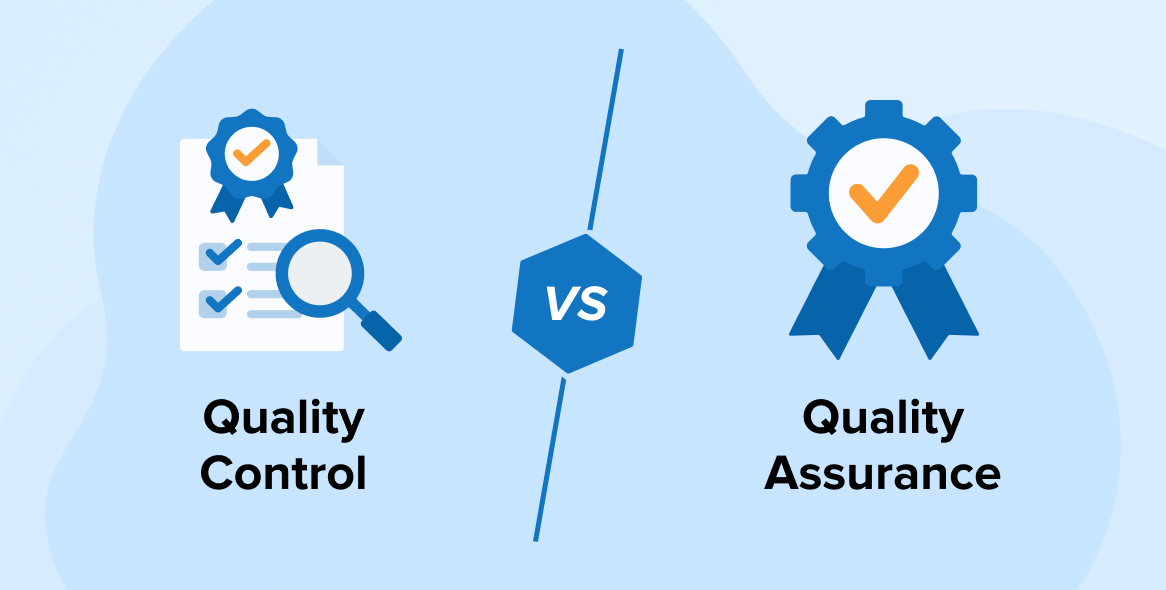
You can’t risk losing customers by releasing subpar software in an era when your rivals are only a cursor click away. Learning about software quality, though, may be difficult. It’s easy to get lost in the sea of jargon and ever-evolving technical phrases. To help you out, we’ll discuss the “software testing vs. quality assurance” conundrum here.
Software Testing and Quality Assurance (QA) are occasionally mistaken by the terms. However, this is not the case. Some may grasp the distinction between testing and QA services but struggle to put their finger on it. Therefore, we’ll break down the differences between quality assurance and testing, as well as why you need both to release bug-free code.
1. What is Software Testing?
Software testing is the process of examining a system for any flaws and problems, as well as verifying the functionality of the code provided by developers. Various techniques are applied to assess the product, identify faults, and determine if they have been corrected. In terms of design, usability, functionality, etc., testing enables us to determine if a generated product fits client requirements or objectives.
In actuality, we may refer to it as a collection of procedures whose purpose is to ensure that the latest version of the product produces outcomes that are as similar as feasible to those specified in the acceptance criteria or other specifications. One of the greatest benefits of testing in IT projects is the generation of error reports that are easily understood. Thus, engineers can comprehend what happened wrong and how to correct it. Notably, testing can only identify vulnerabilities and flaws in an existing product or limited portions of it.
Tests may be conducted using a variety of methodologies and procedures; they may be totally automated or conducted manually. If practicable, they can be performed at each stage of the selected development cycle for both static and dynamic aspects. There are many testing methods, like testing in production, user acceptance testing, system testing, integration testing, performance testing, functional testing, unit testing, beta testing etc., will still need to be used after the fact. Simply said, testing is intended to prevent issues with the product from reaching clients after its appropriate delivery.
2. Types of Software Testing
2.1 Performance Testing
As the name suggests, this type of testing is performed to evaluate the performance in terms of responsiveness and stability under the workload. It helps to analyze applications’ reliability, size, speed, and robustness.
2.2 Acceptance Testing
This type of software testing verifies whether the entire system works as expected or not. It checks whether all the business requirements are fulfilled by the system. There are various types of acceptance testing such as alpha testing, user acceptance testing, beta testing, and business acceptance testing.
2.3 Unit Testing
This software testing technique checks all the components of the system and tests them to validate if each software unit is performing as per expectation or not. It is performed by a team of software developers during the early application development phase.
2.4 Regression Testing
This is a software testing method that tests existing software applications to make sure that a new addition or change in the software is not affecting the existing functionality of the system. Basically, it is a partial or full selection of executed test cases that are performed to check whether the existing functionalities are working fine.
2.5 Functional Testing
This software testing technique is widely used by QA to determine whether a particular part of the software is working according to the predetermined requirements. The testing process is based on the specifications of the software component undergoing the test.
2.6 Integration Testing
This software testing phase tests software modules as a group and evaluates the system’s compliance with the predetermined functional requirements. Integration testing is performed between the system and unit testing as well as identifying the defects in the interaction between integration units.
2.7 Sanity Testing
It is a quick evaluation to check whether the assembled material is rational or not. The such testing technique helps in ruling out classes of obviously incorrect outcomes rather than noticing every possible error.
3. What is Quality Assurance?
When you take care to ensure the project’s quality, you lessen the likelihood of making any blunders that might compromise its success. This aspect of quality management ensures that the promised characteristics of a product or service are consistently delivered and successful development of a company’s quality objectives.. The goal of this technique is to streamline the process of developing software by making it easier to detect bugs.
Successful IT solutions rely heavily on software quality assurance (QA) since it addresses many management concerns (such as development approaches, project analysis, protocols, etc.). A well-thought-out testing procedure assessment method makes development more efficient, which in turn makes it simpler to reach a long-term objective.
It is crucial to stick to the quality assurance strategy throughout the whole product development process in order to ensure the highest quality standards are met. The project’s progress and each QA testing team member’s contributions are accurately recorded. The QA group gathers and examines the statistics from the overall software development cycle to adjust the course of action as needed. Having access to such data has proven useful in identifying product-wide issues among analysts and engineers.
A huge number of regression mistakes, small tweaks that will require more financial resources, and a delivery date that is delayed over the target range are all theoretical risks that might occur at any point. It’s reasonable to assume that QA work influences every stage of product development, from initial concept to final testing and deployment. In a perfect world, QA would streamline operations and modify procedures to eliminate the need for fixing bugs. In actual use, it drastically lessens the issues. Sharing the responsibility of adhering to QA guidelines throughout the team is a worthwhile endeavor.
4. Types of Quality Assurance Testing
4.1 Unit Testing
It is a type of testing that is performed at the ground level, unit testing is low-level testing that is conducted to test individual units of the software under development. Software developers focus on testing while the development phase is going on to make sure that each section of the application meets certain standards.
4.2 Component Testing
Once you’re done with unit testing, component testing is performed as it allows software testers to test more than one unit or component in a single code. It uses real data and tests how different components work without being dependent on integration, component testing helps to analyze defects that may arise, once the components are connected.
4.3 End-to-End Testing
End-to-end testing is a type of QA testing that helps in testing the performance and functionality of the system – under live settings. It also helps to simulate what a real-world scenario would look like and helps test data integrity and intercommunication with other systems.
4.4 Smoke Testing
It involves reviewing whether the most basic functionality of the application is working as expected or not. It is specially used after a new build as it helps to determine if more expensive tests need to be run on the application in the newly deployed environment.
4.5 System Testing
System testing allows QA teams to consider how various components of software interact in a full, integrated system. It focuses on overall requirement specifications and ensuring every kind of user input produces the intended output.
4.6 User Acceptance Testing
This is basically the last test performed in the QA lifecycle before the final release. It assesses if the application can handle real-world scenarios.
5. How Does Software Testing Differ From Quality Assurance?
- In a nutshell, whereas quality assurance works to prevent bugs from ever appearing in the first place, software testing helps locate and solve those that already exist. Both of these are important for better product quality standards.
- Testing focuses mostly on finding bugs or major failures, whereas quality assurance ensures that the design satisfies stakeholder expectations.
- The goals of testing are to regulate the system, find errors, and take remedial measures for the product. In contrast to quality assurance, which focuses on steadily raising the bar for the project as a whole, testing primarily examines the functionality of the software.
- Software testing and QA can be compared based on their constituent parts (goal, issue, description, action, and direction).
- Quality assurance monitors and manages all tests to ensure the program can function as expected. Case studies, actual usage, and feedback are the mainstays of testing.
- It is commonly accepted wisdom that a product’s integrity cannot be “tested,” but this does not exclude quality assurance.
- Quality assurance focuses mostly on process optimization to get desired results. Manual tests and reports are commonly used to monitor the effectiveness of such quality assurance techniques.
- Quality Assurance (QA) is a management strategy for ensuring that a firm meets its quality goals. It encompasses everything from procedures to policies, standards, guidelines, resources and education that may help ensure quality goals are met. In a comprehensive approach to manage software quality, testing plays just a minor role.
6. Conclusion
Firstly, in the previous several decades, test automation and initiatives like shift-left testing have blurred the distinctions between testing and quality assurance. The emergence of continuous integration/continuous delivery (CI/CD) and the DevOps ethos shattered internal silos, erasing distinctions between the development, testing, and operations teams. In the major opinion, testing has always been an element of quality assurance, which is the second reason. Therefore, testing procedures must be a component of quality assurance (QA) if QA is defined as a collection of measures taken by a team to guarantee that the final product meets or exceeds expectations.




Comments
Leave a message...